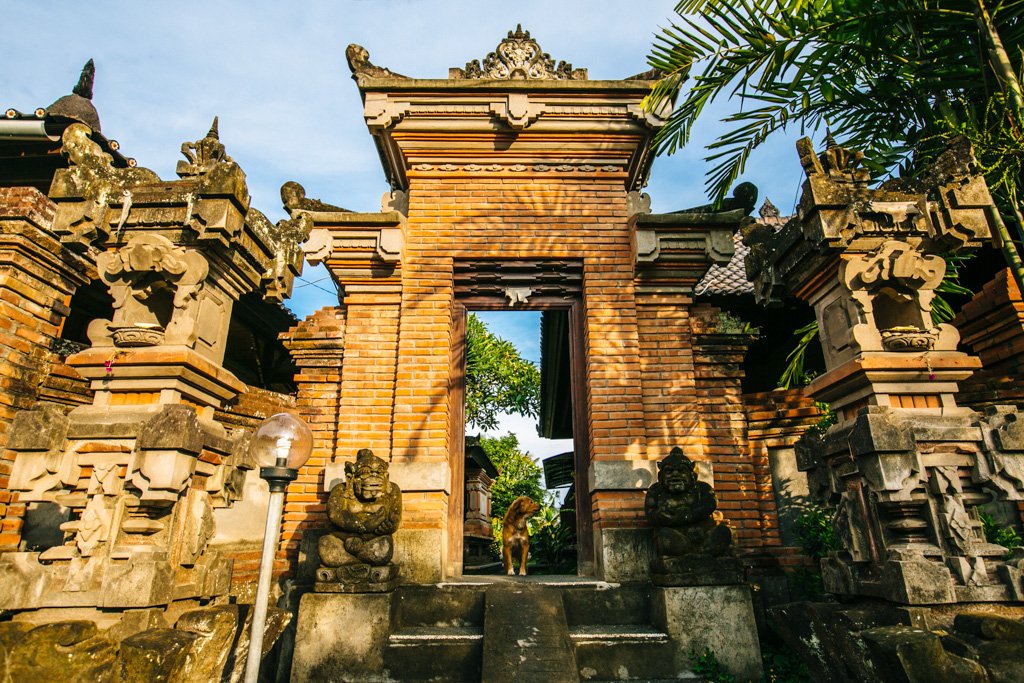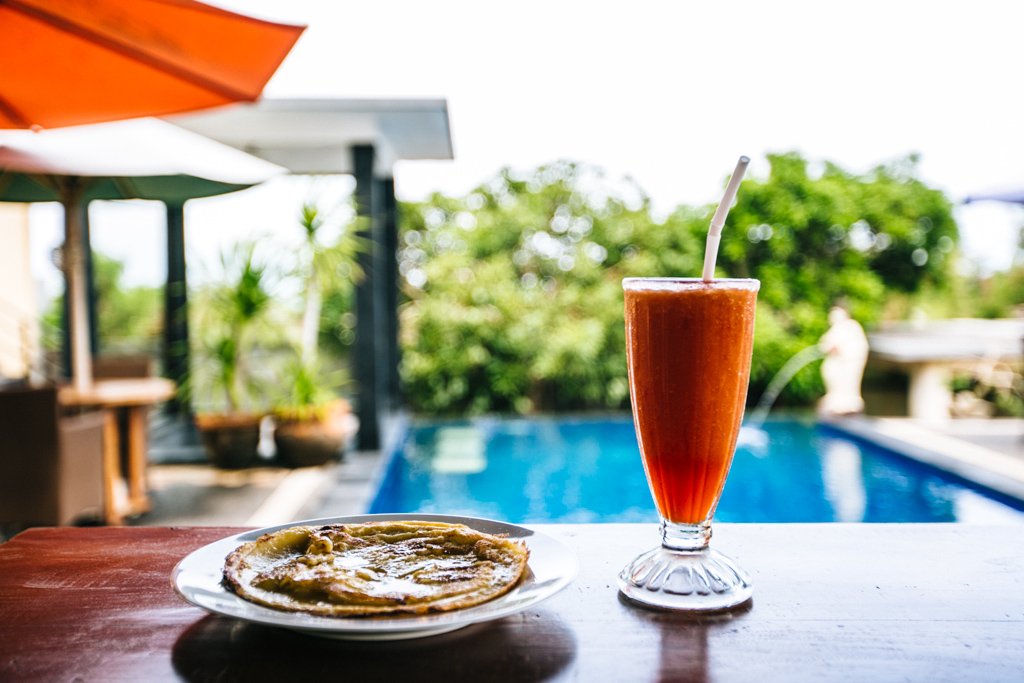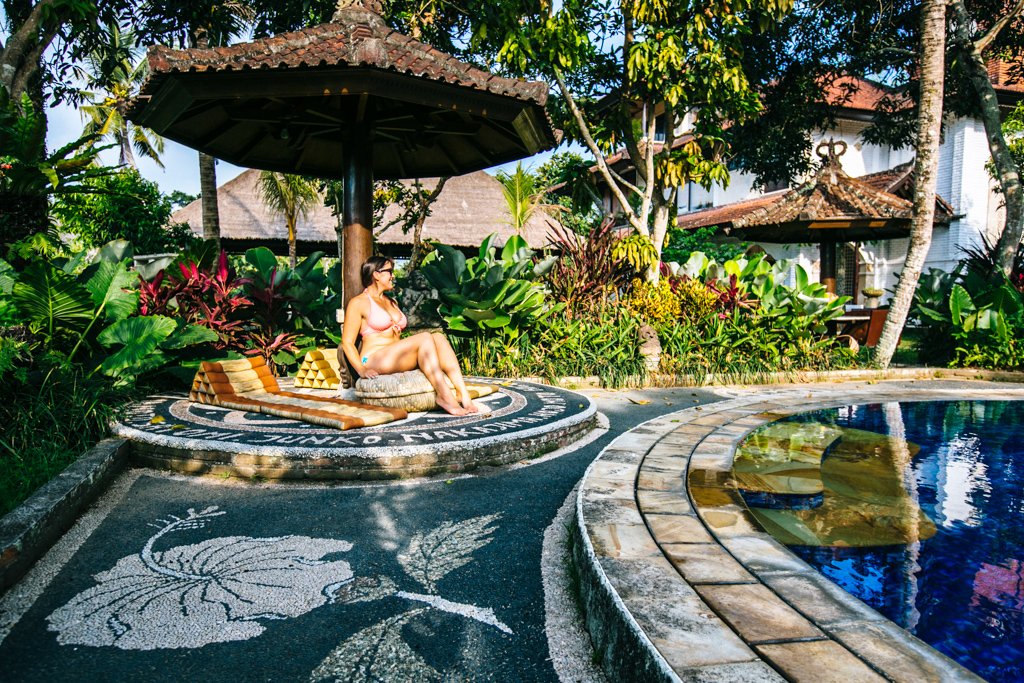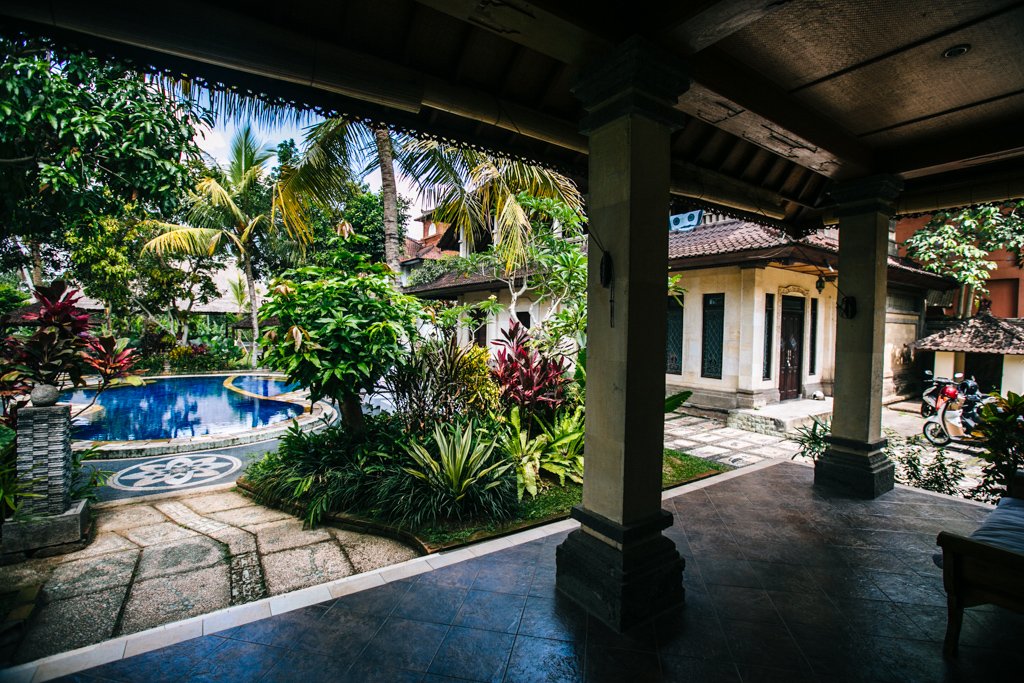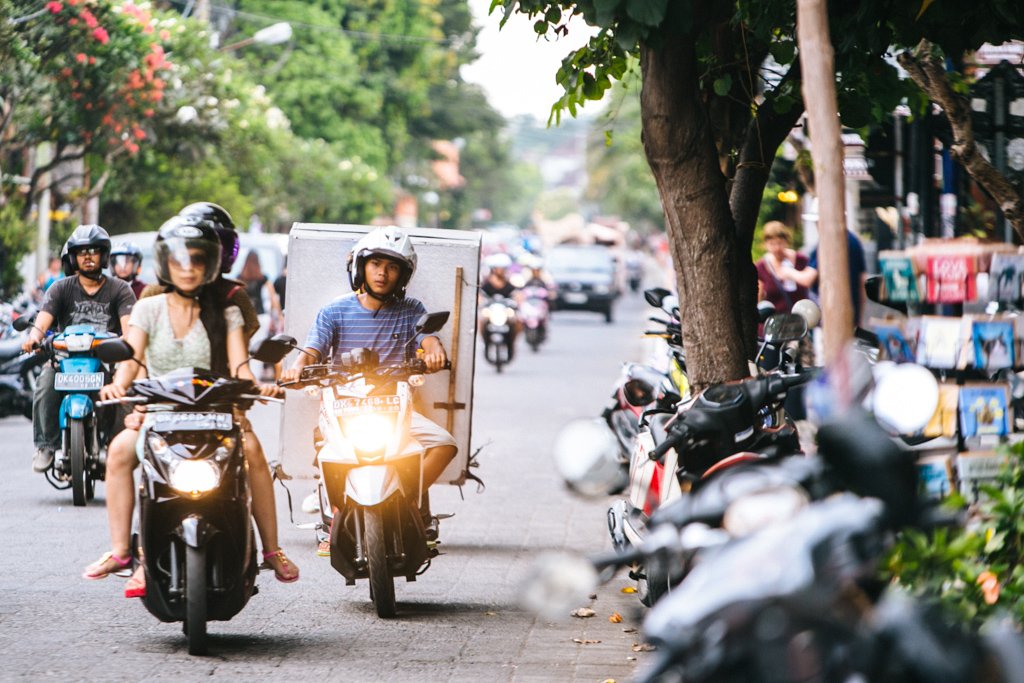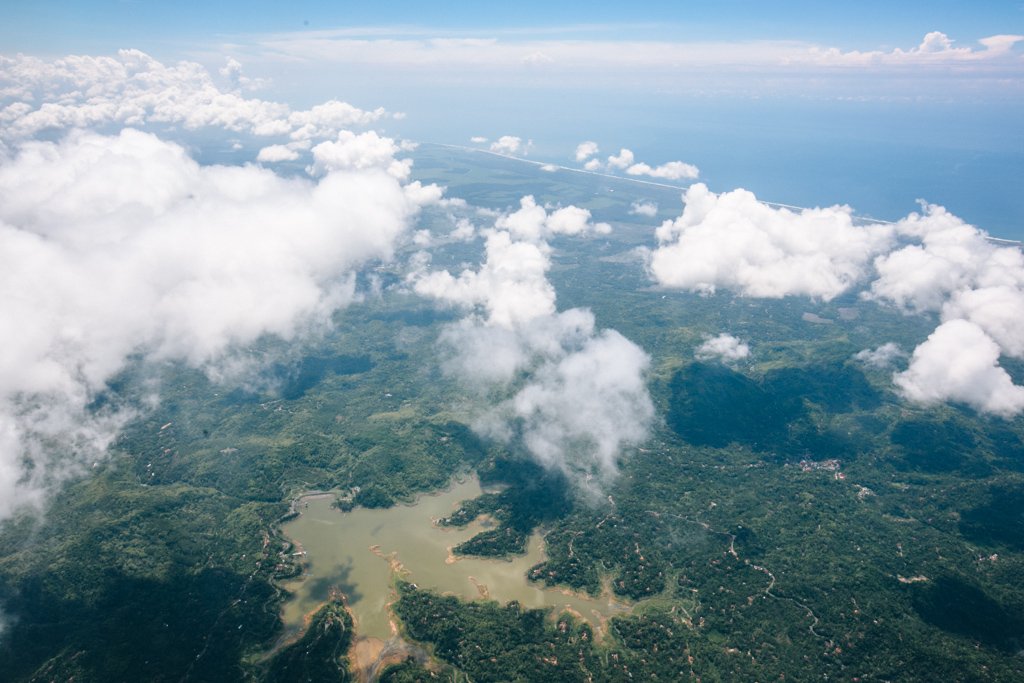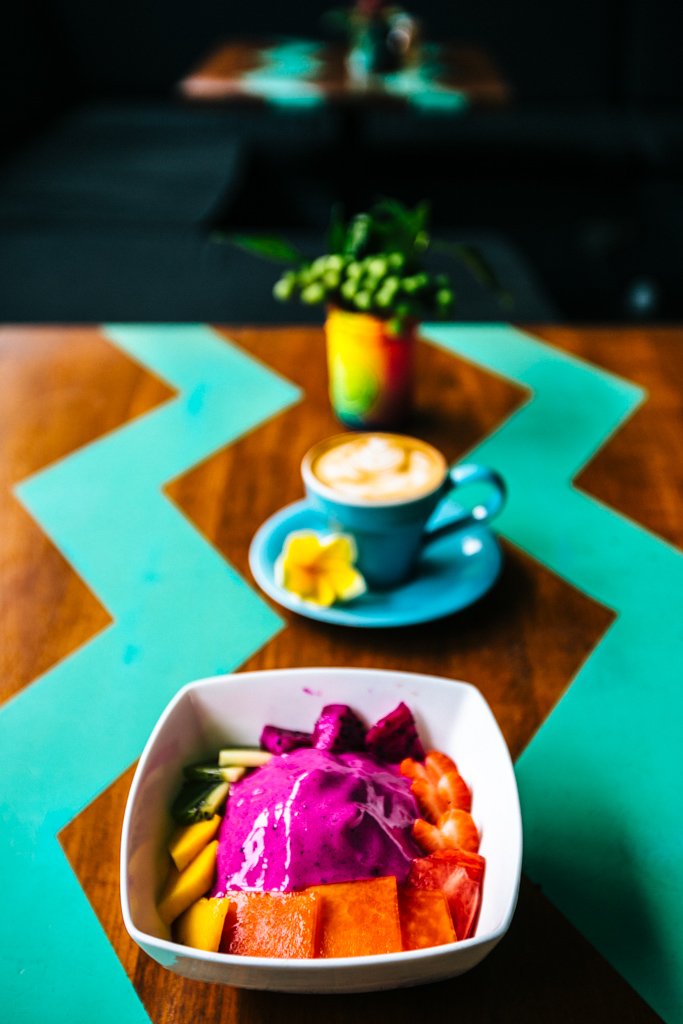This post was last updated on 2025 October 27
This article on a Why You Should Splurge In Bali may contain affiliate links. If you click and make a purchase using these links, I will make a small commission at no extra cost to you. Thanks so much for supporting Frugal Frolicker! :)
I realize that my choice of a blog name has somewhat pigeonholed me into a certain style of travel. Budget travel, backpacking, travel hacking, whatever you call it: I’ve always sacrificed luxury and comfort in the name of saving money and thus being able to travel more. Most of my travel-related decisions are made based on the cheapest options, and until my student loan debt is paid off, this is the way it has to be.
That said, I had every intention of approaching my recent trip to Bali with my usual mantra. Then I made one trip-changing realization:
Bali is a phenomenal value destination.
Planning a trip to Bali?
These are the sites I use and recommend for booking travel:
ACCOMMODATION IN BALI: I always search on Booking.com for accommodation, as their Genius loyalty program offers 10-20% discounts and free breakfast/upgrades for certain hotels. Or in this case, you can skip the search and book Le Pirate, which is where I stayed.
FLIGHTS TO BALI: When researching flights, I always check Skyscanner first because it pulls in flight options across all airlines and saves you the trouble of searching each airline individually. When booking flights via Skyscanner, I always book directly with the airline rather than one of the third party options.
PUBLIC TRANSPORT IN BALI: 12Go is the best site to book transport (buses, trains, ferries) from A to B in a lot of Asian countries.
ACTIVITIES IN BALI: If you’re looking to book tours or other organized activities on your travels, GetYourGuide and Viator both offer myriad options for fun things to do all around the world (think: sailing trips, cooking classes, city walking tours, and more).
TRAVEL INSURANCE FOR INDONESIA: Unless you can easily afford to pay for huge unexpected medical bills, DON’T TRAVEL WITHOUT TRAVEL INSURANCE! These days, I usually buy the Safety Wing nomad insurance, as it’s very affordable and caters to digital nomads with a monthly subscription option. I’ve also been a longtime World Nomads user, and will still use them if I need more comprehensive insurance (e.g. for adventure activities) or if I am visiting the US (Americans aren’t eligible for Safety Wing’s US add-on option).
ESIM / SIM CARD FOR INDONESIA: When traveling overseas, I always purchase an eSIM from Simify for the country I’m going to, activate it before I depart, and as soon as I arrive I am automatically connected to the local network and can easily find my way to my accommodation. No need to to buy a local SIM card at the airport; eSIMs are fully electronic and don’t require you to take out your old SIM.
LUGGAGE: I am currently a July luggage girl (July Australia / July US). They offer a lifetime warranty, which I have used multiple times now – and every time, they have sent me a brand new replacement suitcase without hassle. I recommend their Checked Plus if traveling with 32kg/70lb of luggage (note: many airlines do not allow bags this heavy!), the Checked if traveling with 23kg/50lb of luggage, and the Carry On Light (Expanded) which is super lightweight and really helps you stay within the 7kg carry-on limit that many Aussie airlines enforce. Click to read my full review of July luggage.
Yes, you can absolutely travel Bali on a shoestring if you want to. There are $5 dorm rooms aplenty, dirt-cheap local buses, and simple local dishes that only cost $1-2 apiece. But when the cost of upgrading your digs, wheels, and bites is minuscule compared to the difference in quality between the cheapest option and the much-better option, the decision is a no-brainer.
Far be it for me to ignore my first real opportunity to upgrade my usual travel style with minimal damage to my wallet. I enjoyed the hell out of Bali, and it’s 100% because I allowed myself to travel without worrying about how much money I was spending.
Guys, you’re just not doing Bali right if you’re traveling on a shoestring. Bali is a place where you should absolutely loosen your purse strings a little – where spending just a few dollars extra makes all the difference between an average experience and a fantastic one.
Allow me to illustrate:
Accommodation in Bali
There are three main types of accommodation in Bali: hostels, homestays, and hotels.
Hostels in Bali
A bed in a hostel dorm room will run you about $5/night, similar to other countries in Southeast Asia. I didn’t stay in a hostel at all while in Bali because the other accommodation options are so much better value (as you’ll see below!).
CLICK TO BOOK A HOSTEL IN BALI.
Homestays in Bali
Indonesia is the first country I’ve visited where homestays are super prevalent. The idea is that local families open up rooms in their home and rent them out to tourists. For just a few dollars more than what you’d pay to share a dorm room at a hostel, you can get your own private room (sometimes even ensuite), a homecooked breakfast, and a more local experience. Usually families are very eager to help you out with suggestions for things to do, and may even offer personalized tours for a small price.
I booked myself into a couple homestays in Java (but not in Bali) and found them to be a great no-frills affordable accommodation option. The families are happy to chat with you, but will usually leave you be unless you approach them. Expect to be without aircon and hot water unless the homestay specifically advertises these perks. Personally, I was fine having a fan on blast and showering with lukewarm water at the hottest time of day.
Many homestays are bookable online, but you’re better off waiting until you arrive and then bargaining for a lower rate in person. There’s no shortage of homestays in the major tourist areas (Ubud, Seminyak, Kuta, Uluwatu), so you’ll be able to walk down most any major street and have several to choose from. Expect to spend $7-10/night at a homestay in Bali.
Hotels in Bali
Before arriving in Bali I did an innocent search for hotels in Ubud on booking.com, just to see what was out there. $15 hotel rooms, that’s what’s out there. And that, my friends, is why I only stayed in hotels while in Bali. Paying $5-10 more per night for a significantly nicer room, more space and privacy, better bedding, excellent service, and more beautiful grounds? Oh hell yeah, it’s worth it. And if you’re sharing the room with a travel companion, it’s more than worth it.
I stayed in 3 different hotels while in Bali, paid around $20/night on average, and absolutely loved each one of them.
Seminyak: Favehotel Sunset Seminyak – $22
After a rough week schlepping through Java, a few nights at the brand new Favehotel Sunset Seminyak was exactly what I needed. My room was cozy but ridiculously clean and comfortable. I loved the modern bathroom with hot water, plush bedding, and aircon. I’m normally not that fussed about service, but I was really impressed with how attentive and responsive the staff were here. The breakfast buffet was not that great, but I didn’t care because every day I’d roll out of bed and make the 15 minute walk into town to hole up at a coffee shop.
Uluwatu: Sandat Mas Cottages – $20
Reviews were somewhat mixed online, but I’m pleased to report that I thoroughly enjoyed staying at the Sandat Mas Cottages. My sizable single room came with aircon and a terrace, and the lack of hot water didn’t bother me because my sunburnt skin wouldn’t have been able to take it anyway. I loved starting my mornings with a banana pancake by the pool, enjoying the slight coastal views and soothing sound of the fountain. Best of all: it was just a 7 minute walk down to the Uluwatu coast, where all the warungs, shops, and bars with a view are located.
Ubud: Yogalaya Ubud Resort – $18.50
At the Yogalaya Ubud Resort I had an insanely spacious single room with aircon, (sporadically) hot water, and a view of the neighboring rice fields and the resort pool from my terrace. I was very happy with my breakfast omelet and generous plate of fresh fruit each morning, enjoyed from a table in the gardens. This hotel is a 35-minute downhill walk into town, but it’s a beautiful and peaceful stroll past rice fields and through villages. To get back up, you’ll pay 25,000 IRD (about $2) for a 10-minute motorbike taxi.
Unlike with homestays, I’d recommend booking your Bali hotels online for the best deals. I snagged all of my hotel deals via booking.com.
SEARCH FOR ACCOMMODATION IN BALI:
Transport in Bali
Public transport is seriously lacking in Bali, which all but necessitates travel by taxi or private car. Good thing is, private transport options are so affordable in Bali that you don’t need to fix your gaze on the meter and feel your blood pressure rising the closer you get to your destination (c’mon, I know it can’t just be me who does that!).
Motorbikes & Taxis in Bali
Motorbikes are the main source of transport in Bali (as you’ll see, the roads here are notoriously narrow and not well suited to cars). Many visitors will hire a motorbike (approx. $9-10/day), but unless you have a motorbike license in your home country, you won’t be covered by insurance in case of an accident – so it’s risky and IMO not really worth it.
The safer and cheaper option is to use the Grab or Gojek app (Asia / Indonesia’s Uber equivalent) and order a bike taxi to pick you up and transport you to your destination whenever you need to go somewhere. If you’re in a popular tourist area, rides will be readily available and incredibly cheap. It’ll only cost you about $1 to ride across Ubud or Canggu on a bike.
Bopping between towns with your luggage will require a car, though. You can book a car via the Grab or Gojek app, or book a car through your hotel (which will usually be a bit more expensive).
In 2015, I took an Uber from Seminyak to Uluwatu and the 50-minute ride cost me 95,000 IDR ($6.50). I prebooked my airport transfers through my hotels, paying 300,000 IDR ($22) to get from the airport to Ubud (1 1/4 hours) and 200,000 IDR ($14.50) to get from Uluwatu to the airport (45 minutes).
In 2024, I prebooked my airport transfer via Klook and paid about US$17 to get to Canggu (45 minutes).
Bottom line? Always opt to use Grab/Gojek whenever possible, as it’s your best value alternative for private transport in Bali. And don’t stress: $15-20 to get to the airport aint too shabby, especially if you’re splitting the ride with traveling companions. And man, does it feel good to sit still in that aircon.
Internal Flights in Bali
I was shocked to find that flights from Bali to some of the other Indonesian islands are actually ridiculously affordable. There are no less than 10 Indonesian carriers flying within the islands, most with a safety record so questionable that they’ve been banned from flying to/from the European Union… a fact I was unaware of until after I booked my $35 LionAir flight from Denpasar to Yogyakarta (my bad).
So, there’s that. You’ll probably be fine flying one of these low cost Indonesian airlines, but if you’d rather skip the $17 half-hour flight from Bali to Lombok, there’s always the $25-40 3-6 hour boat trip between the islands. Oh, but by the way, boat safety is also an issue in Indonesia – they’ve got a history riddled with shipwrecks and other nautical woes.
In other words, pick your poison. I’d rather opt for the cheaper, faster one, wouldn’t you? I found the cheapest flights from Bali by searching on Momondo.
Flying from Bali to Java
Eating in Bali
Look, I’m not above nomming on street food and dining at cheap-as warungs. If you eat the local food in Bali, you can get away with spending $2-3 per meal, often including a drink. I loved that I could “splurge” on both a massage and a yoga class in one day, then balance it out with an insanely cheap dinner.
However, there’s a limit to how much nasi goreng I’m willing to consume. I’m a girl who loves her meats and veggies in generous portions, so the Balinese diet of fruits and grains just doesn’t do it for me.
Bali haters begrudge the fact that the island’s become so westernized, and on one hand I totally get that. It’s changed so much to accommodate western tourists, and I don’t doubt that it’s lost some of its culture, charm, and natural beauty in the process. That totally sucks.
But another byproduct of the rampant tourism is all the cafes and restaurants serving western food that have popped up all over Bali. I’m not talking about the fast food joints and crappy chain restaurants (which do regrettably exist in Bali). Nope, I’m singing the praises of all the healthy organic eats in Bali.
Bali is a magical place where acai bowls and nalu (smoothie) bowls can be had for about $4. As beautifully constructed as they are tasty, most bowls consist of granola, coconut flakes, honey, a blended mix of tropical fruit that’s yogurt-like in consistency and often a gorgeous magenta color, with sliced fruit on top. I’m pretty sure I paid at least $10 for an acai bowl in Melbourne, and the fruit was nowhere near as exotic or fresh as anything I consumed in Bali.
Speaking of fruit, one of my greatest joys of dining in Bali was eagerly perusing the restaurant’s selection of fruit juices and smoothies. For more or less $2, you can enjoy the freshest fruit conceivable, in blended liquid form. If you’re at a western cafe, expect to pay closer to $3 for fancier smoothies with things like spirulina, flax, or protein powder in them.
And in case the crazy-affordable price tag isn’t enough to justify your daily smoothies, consider that you can’t drink the tap water in Bali and need to shell out money for beverages anyway. Plus, it’s so unbelievably hot and humid that you need to be extra diligent about staying hydrated.
So go on, girl, and drink up! (is what I told myself). My fruity beverage of choice? The fresh young coconut, for a mere $1.50.
Babi guling. Not a big-ass salad, but also tasty.
One of the things I missed most from home while traveling in Asia back in 2013 was, and I quote, big-ass salads. They’re hard to come by in mainland Asia, but in Bali they’re everywhere, and in so many forms.
Whenever I was seriously jonesing for a salad, I hit up Earth Cafe for their dragon bowl: “an assortment of grated organic vegetables, pomelo, avocado, alfalfa sprouts, and sizzled tempeh, served over a bed of cold buckwheat noodles (soba) with toasted sesame dressing and shredded nori”. The price for a bowl the size of my big fat head? $5. I couldn’t *not* take advantage of such tremendous value, especially knowing that a). I’d never find this particular salad back in Australia, and b). Even if I did, it would easily cost more than twice as much.
So I indulged and felt zero guilt for it. Wouldn’t you?
Massages in Bali
One of my favorite things about Southeast Asia is how absurdly cheap it is to get a massage. I regret not taking advantage of this more while I was traipsing around the region back in 2013.
I resolved not to make the same mistake when I returned this month, and I’m happy to report I smashed my theoretical goal with a cumulative 4.5 hours of massage for just $42.50. That’s just under $10/hour, for what in most cases was a pretty damn good massage. You can find a decent massage for about 100,000-150,000 IRD ($7-11) per hour in Bali, but quality can wildly vary.
I enjoyed massages in a tranquil spa setting, in the middle of a sculpture shop while looking out at street traffic, and while sitting in a waterfront restaurant (thank you, persistent sarong lady!) – which just goes to show that the environment matters very little when it comes to the overall quality of your massage experience (or at least it did for me!).
The Balinese massage is, not surprisingly, the speciality in Bali. It’s a little too gentle for my preference, but you should definitely experience it at least once there. I’m more of a sucker for foot reflexology! The best massage I had, though, was a full body deep tissue massage at Iman Spa in Ubud. Slightly pricer than normal at $13 for an hour, but I swear the guy who worked on me was some kind of wizard. His hands literally never stopped moving! It was one straight hour of constant energy flow – magic!
The Bottom Line
Bali is a travel destination that offers fantastic value for your money. To travel Bali on a tight backpacker budget and not take advantage of how far your western dollar goes here would be a huge mistake.
You guys know how important it is to me to travel cheaply and share my cost-cutting techniques with you. It’s a huge component of this blog (hello, frugal), and it’s what enables me to do what I do without sacrificing my freedom to work a corporate desk job, while continuing to pay off my student loans.
So when I implore you to splurge in Bali, know that I damn well believe that it’s worth it.
I spent about $1300 in total for 3 weeks traveling solo in Indonesia, including the return flight from Melbourne. For my 2 weeks in Bali, I spent about $755, averaging $54/day.
You can adopt the same spending habits I had and spend a bit less if you have someone to split room costs and taxi fares with. I reckon I’d have saved close to $200 ($14/day) if I weren’t traveling solo in Bali.
You could also ignore my advice and do Bali on the cheap, backpacker style. If I’d stayed in hostels and minimized my taxi rides and other extras, I’d have saved $250-300 ($18-21/day).
I’m thrilled to have loosened my purse strings a bit and had a more comfortable and enjoyable experience traveling in Bali. It was absolutely worth the money. Best of all: while it felt like a massive splurge, in reality I only spent a couple hundred dollars more than I would have on my usual budget.
Planning a trip to Bali?
These are the sites I use and recommend for booking travel:
ACCOMMODATION IN BALI: I always search on Booking.com for accommodation, as their Genius loyalty program offers 10-20% discounts and free breakfast/upgrades for certain hotels. Or in this case, you can skip the search and book Le Pirate, which is where I stayed.
FLIGHTS TO BALI: When researching flights, I always check Skyscanner first because it pulls in flight options across all airlines and saves you the trouble of searching each airline individually. When booking flights via Skyscanner, I always book directly with the airline rather than one of the third party options.
PUBLIC TRANSPORT IN BALI: 12Go is the best site to book transport (buses, trains, ferries) from A to B in a lot of Asian countries.
ACTIVITIES IN BALI: If you’re looking to book tours or other organized activities on your travels, GetYourGuide and Viator both offer myriad options for fun things to do all around the world (think: sailing trips, cooking classes, city walking tours, and more).
TRAVEL INSURANCE FOR INDONESIA: Unless you can easily afford to pay for huge unexpected medical bills, DON’T TRAVEL WITHOUT TRAVEL INSURANCE! These days, I usually buy the Safety Wing nomad insurance, as it’s very affordable and caters to digital nomads with a monthly subscription option. I’ve also been a longtime World Nomads user, and will still use them if I need more comprehensive insurance (e.g. for adventure activities) or if I am visiting the US (Americans aren’t eligible for Safety Wing’s US add-on option).
ESIM / SIM CARD FOR INDONESIA: When traveling overseas, I always purchase an eSIM from Simify for the country I’m going to, activate it before I depart, and as soon as I arrive I am automatically connected to the local network and can easily find my way to my accommodation. No need to to buy a local SIM card at the airport; eSIMs are fully electronic and don’t require you to take out your old SIM.
LUGGAGE: I am currently a July luggage girl (July Australia / July US). They offer a lifetime warranty, which I have used multiple times now – and every time, they have sent me a brand new replacement suitcase without hassle. I recommend their Checked Plus if traveling with 32kg/70lb of luggage (note: many airlines do not allow bags this heavy!), the Checked if traveling with 23kg/50lb of luggage, and the Carry On Light (Expanded) which is super lightweight and really helps you stay within the 7kg carry-on limit that many Aussie airlines enforce. Click to read my full review of July luggage.




